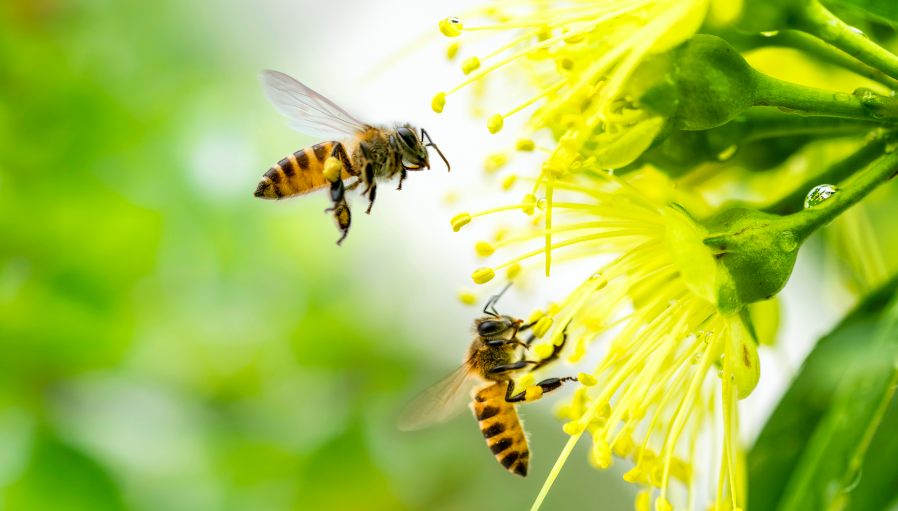Youth making a change in the fashion world, enhancing the gut-brain connection, bee numbers rebound … Positively Newsworthy is a section of the magazine in which we highlight some happy news stories from around the globe. Enjoy our 2021 edition below!

Solution Seekers
Gen-Z Making The Change
by Alison McEvoy
A London-based app is now making it much easier to save old or ill-fitting clothes from the scrapheap. Sojo is a web app that links people to talented seamstresses in their area to adjust and alter clothing; “Users enter their postcode, choose a local seamster and the service they need and await collection of their garments by a bike courier. The clothes will be returned within five days, ready to wear,” comments Sojo creator, Josephine Philips.
One customer raved that “it was like getting a new piece of clothing”. This is heartening, as it can be hard to resist the pull of cheap and chearful online shopping. However, it can be just as exciting to re-tailor and creatively adjust a piece of clothing that has been gathering dust in your wardrobe.
“Fast fashion” is the term that Josephine uses to describe the massive fashion industries that churn out cheap clothing as fast as their underpaid and overworked employees can force their fingers to move. She realised that her clothing choices didn’t align with her values and Sojo was her way of making a change; “..whether in charity shops, thrift stores or on [buying and selling website] Depop, I’d constantly find clothes that I loved that weren’t my size. I realised the solution was to alter them.”
It is so amazing to see the newer generations seeking solutions to the injustices and unsustainable practices they encounter in the world, and making efforts to make things right from the epicentre of their own lives.

Knowledge is Power
The Gut-Brain Axis
by Alison McEvoy
Since many of us are spending more time in our home kitchens, it might excite you to know that what you rustle up not once a fully belly, but also a good mood.
There is a prolific amount of data emerging from scientific quarters about the gut-brain axis. While folk and traditional medicine has long been aware of this connection, it is really helpful to have modern language to talk about this connection, and some awesome people out there are coming up with modern solutions to the lack of understanding and practical support.
The Good Mood Company is one such initiative. They have come up with a two-pronged, physical and digital approach to help people rebalance the health of the gut. More and more of us are coming to know that what is in the gut actually communicates with and affects the brain.
‘Bad’ bacteria will literally put you in a bad mood. Think crankiness, irritation and grumpiness until the little ‘baddies’ screaming out in your gut get their afternoon sugar fix! The ‘goodies’ will leave you feeling mentally and physically calm, satisfied and grounded.
The Good Mood Company is a good place to start, and there are plenty of plain-talking books out there that will fill you in on what’s happening under your very own skin, between the gut and the brain.
While it can feel like we are tiny dinghies – regularly tossed, overturned and sunk by the tumultous winds and waves of the emotions – we can turn the tide with information, knowledge and awareness. This empowers us once more to stand stable at the helm of our lives.

Bees Buzz Back
The Upswing in Dutch Cities
by Aisling Cronin
A nationwide bee census in the Netherlands has revealed that a recovery in bee numbers is afoot, and highlighted how small-scale conservation projects in Dutch cities have sown the seeds for this recovery. Some 11,000 volunteers took part in the annual survey, which appeared to show an increase in bee numbers in urban areas.
In recent years, the Netherlands has made some subtle changes to its cities to make them more hospitable to pollinating insects. Some of the tactics used to address declines in the bee population included the establishment of ‘bee hotels’ in parks and gardens, green roofs on bus stops, and wildflowers planted along grass verges.
Koos Biesmeijer, head of Naturalis, a biodiversity charity behind the survey, said those efforts appear to be paying off. “We think numbers are increasing in cities, and that’s because of greater awareness among people,” he commented, explaining that many city dwellers had made efforts to attract bees.
The Dutch bee census is now in its fourth year. While Biesmeijer warned that it was too early to draw definitive conclusions from it, he said that the initial results of the survey were encouraging. “If everybody does their bit, then you can really transform landscapes. If you put in habitats for them, bees can thrive.”

